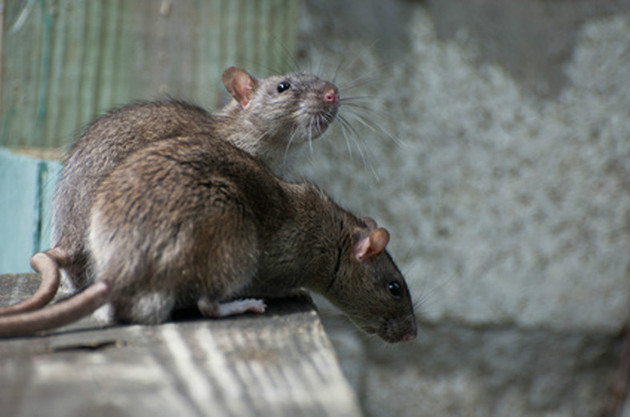Knowing the brown rat to catch it better
The brown rat (Rattus Norvegicus), or commonly known as the “Sewer Rat” is generally grey-brown in colour, with a lighter ventral coat. Its adult size, including tail, varies from 35 to 45 cm for an average adult weight of about 350 g. Its life expectancy is 3 years for females and 4 years for males. This mammal is classified as a “rodent”, which means that it has to gnaw to wear out its incisors, which are constantly growing, just like rabbits. It is a fast and agile animal and an excellent swimmer. It is omnivorous and feeds on all foodstuffs and consumes everything that humans leave for it (even meat). Its daily requirements correspond to 10% of its weight and it consumes a lot of water.

Where the brown rat lives :
Unlike its cousin, the black rat (Rattus Rattus), the brown rat has a preference for wet areas, so it lives mainly on the ground, in burrows, or in sewers.
brown rat Lifestyle :
The brown rat lives in a hierarchical community system governed by dominant males. Living mainly in urban areas and taking advantage of the sewage systems at its disposal, it has a larger territory than its cousin the black rat (Rattus Rattus). It is a violent animal both within its community and towards other animals. It is distrustful in general and even with food sources that the dominant male will force a dominated male to test before even touching it.
breeding of brown rat :
A brown rat can reproduce from the 3rd month of its existence. Gestation lasts about 22 to 24 days and each litter can produce up to 12 young that become independent after 4 weeks.
Nuisance caused by black rats :
As you will have noticed from reading this information page or from your own experience following an infestation, the brown rat can cause countless nuisances. It is a socially structured animal that always lives in an environment conducive to its development. Its biggest problem, especially with humans, is that its two pairs of incisors are constantly growing and to live properly it must gnaw to wear them out.
The combination of these different factors leads to the following nuisances:
- Damage to your home and its insulation,
- Financial costs of restoring your home,
- Energy costs due to the deterioration of your insulation,
- High risk of electrical shorts and fires,
- Creation of underground galleries making the interior and exterior floors unstable, – Loss of food due to nibbling of your food,
- Financial losses for food storage companies,
- Financial losses for food distribution shops,
- Transmission of serious diseases such as Leptospirosis and Salmonellosis,
- Possibility of causing asthma attacks and various allergies.
For all these reasons we strongly advise you to solve your infestation problem by trusting one of the [Pest Control service providers] listed in our directory or to buy [materials and products] from our British partner.
Also find out more about black rat, european mole or house mouse
How to treat Black Rat infestations
There are 2 methods of treatment for black rat infestations:
I, Mechanical treatments:
Mechanical treatment consists of using non-toxic traps that have an immediate visual effect.
If you are not in a “food zone” regulated by a health organization, we strongly advise against the use of glue boards, as the rats will always find the physical strength to escape, which will reduce your rat control campaign to nothing.
The use of rat traps, cages, or other types of traps will have a much better yield provided they are well placed on the rodents’ paths and that you use a good bait (your children’s spread will be of the best effect) and that you “adjust” the sensitivity of your traps well. If you have the possibility, make sure that the rodents, attracted by your bait, do not move your traps, which would cause an unwanted closure.
II, Chemical Treatment
Chemical treatment is the treatment with poisons. For maximum effectiveness, it is advisable not to use grain, as the toxic concentration is only found on the grain shell, which greatly limits its effectiveness. Waterproof blocks have the advantage of being more effective because the toxic concentration is in the “mass” of the bait. The only disadvantage is that they are not very attractive to rodents.
The best product is “Fresh Paste” (if it is less than 6 months old) because not only is the toxic concentration in the “mass” of the product used, but if it is fresh it is very palatable because it is perfectly scented to attract your black rats.
Whatever type of product is used, it must be placed in baiting stations, secured with a key, in order to avoid any undesirable poisoning incidents with non-target animals and children. Bait stations should be placed along rodent paths at a distance of about 6 meters from each other. For your treatment to be effective you should check your bait stations once a week and refill them with product until consumption has ceased.

